Home>diy>Building & Construction>How To Get Church Construction Loans
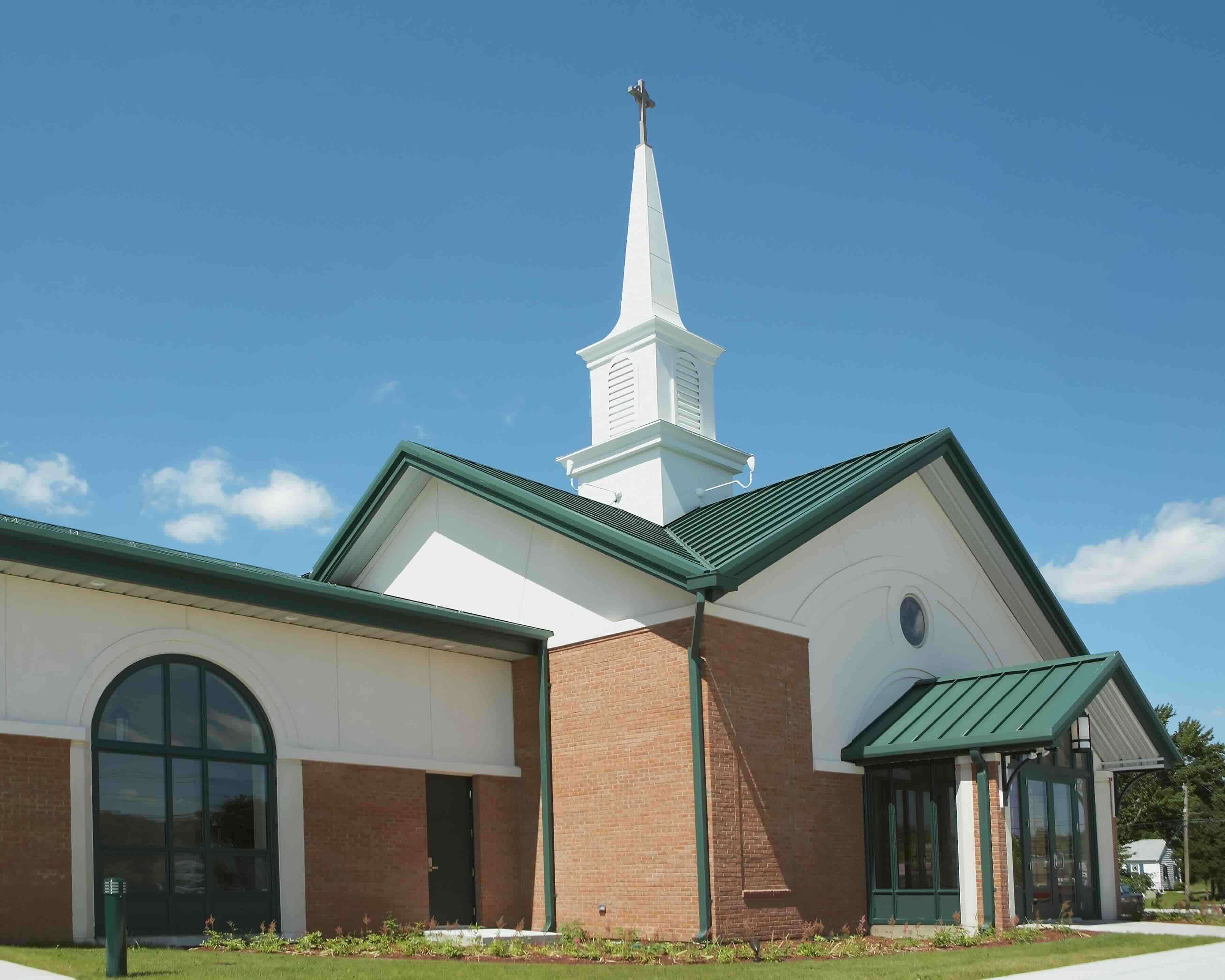

Building & Construction
How To Get Church Construction Loans
Modified: September 1, 2024
Looking for church construction loans? Learn how to secure building construction financing for your church project with our step-by-step guide.
(Many of the links in this article redirect to a specific reviewed product. Your purchase of these products through affiliate links helps to generate commission for Storables.com, at no extra cost. Learn more)
Introduction
Welcome to the world of church construction! Building a place of worship is a significant undertaking that requires careful planning, financial resources, and a strong vision. Like any construction project, financing plays a crucial role in turning dreams into reality. In this article, we will explore the ins and outs of church construction loans and provide you with valuable insights to help you navigate the loan application process with ease.
Whether you’re looking to build a brand-new church or expand an existing one, church construction loans are specifically designed to fund the construction or renovation of religious facilities. These loans provide churches with the necessary capital to construct new buildings, add additional space, or make improvements to their existing facilities.
Unlike traditional loans, church construction loans may have specific eligibility criteria tailored to religious organizations. Lenders typically take into account factors such as the church’s financial stability, membership size, and the overall vision and feasibility of the project before approving a loan. Therefore, it is essential to have a solid plan and a clear understanding of the loan application process.
Before delving into the specifics of the loan application, it is crucial to prepare yourself and your church for the process ahead. Start by assessing your financial capability and determining your budget. Construction costs can quickly escalate, so it is essential to have a realistic estimate in mind. Additionally, understanding the timeline of the project and any potential roadblocks will help you plan accordingly and align your goals with the loan repayment schedule.
When it comes to finding the right lender, it is important to consider financial institutions that specialize in church construction loans. These lenders have experience in dealing with the unique requirements of religious organizations and can offer guidance throughout the loan application process. Researching and comparing multiple lenders will help you find the best terms and conditions that suit your church’s needs.
Once you have identified potential lenders, it is time to gather all the necessary documents. This typically includes financial statements, tax returns, architectural plans, and any other relevant project details. Having these documents readily available will expedite the loan application process and showcase your preparedness to lenders.
One of the key factors that lenders consider when reviewing a church construction loan application is the project plan. A comprehensive project plan outlines the scope of the construction and details the timeline, milestones, and anticipated costs. It is essential to create a detailed and achievable plan that captures the vision and purpose of the church’s construction project.
Estimating construction costs accurately is vital for securing the right loan amount. Engaging the services of experienced contractors and architects can help you create a realistic budget. Additionally, factoring in potential contingencies and leaving room for unexpected expenses can help mitigate financial risks down the road.
Understanding the loan terms and conditions is crucial before committing to a church construction loan. Things to consider include interest rates, repayment schedules, and any additional fees or charges. Consulting with legal and financial advisors can help you decipher the fine print and ensure you make an informed decision.
With all the necessary preparations in place, it is time to submit your church construction loan application. Presenting a comprehensive package that includes all the required documents, a viable project plan, and a clear financial outlook will increase your chances of loan approval. Be prepared to answer any additional questions or provide further information as requested by the lender.
Once your loan is approved, the disbursement process will be initiated. This typically involves funds being released in stages or based on the completion of certain milestones. Managing the construction project effectively and adhering to the agreed-upon timeline is crucial to maintaining lender confidence and ensuring the smooth flow of funds.
As you embark on this exciting journey of church construction, remember to maintain open communication with your lender and consult with professionals who specialize in church construction projects. With careful planning, financial diligence, and a committed team, you can turn your church building vision into a reality. Good luck!
Key Takeaways:
- Securing a church construction loan involves thorough preparation, open communication, and diligent follow-up. Understanding loan terms, gathering required documentation, and finding the right lender are crucial steps for successful loan approval.
- Effective project management, clear communication, and careful budget management are essential for ensuring a successful construction process once the church construction loan is approved and funds are disbursed.
Understanding Church Construction Loans
Church construction loans are a specialized form of financing designed to support the construction or renovation of religious facilities. These loans provide churches with the necessary funds to build new sanctuaries, expand existing buildings, or make improvements to their facilities.
One of the key differences between church construction loans and traditional loans is that lenders take into account the unique needs and requirements of religious organizations. Churches often have specific eligibility criteria to meet, such as demonstrating financial stability and a feasible construction plan.
When obtaining a church construction loan, it is crucial to understand the various factors that lenders consider before approving a loan. These factors include:
- Financial Stability: Lenders want to ensure that the church has the financial means to repay the loan. They may request financial statements, tax returns, and other documentation to assess the church’s financial stability.
- Membership Size: The size of the church’s congregation can influence loan approval. Lenders may consider the number of members and their level of involvement to gauge the church’s support base.
- Project Feasibility: Lenders will evaluate the viability and feasibility of the construction project. They will review the architectural plans, timelines, and the overall vision to determine if the project aligns with the church’s goals.
Church construction loans typically come with different terms and conditions than traditional loans. Here are a few key aspects to consider:
- Loan Amount: The loan amount will depend on the scope of the project and the church’s financial capability. It is important to have a clear estimate of the construction costs to request an appropriate loan amount.
- Interest Rates: Church construction loan interest rates can vary depending on the lender and loan terms. It is essential to explore different lending options and negotiate for favorable rates.
- Repayment Schedule: The repayment schedule outlines when and how the loan will be repaid. This can be structured based on a specific timeline, such as monthly or quarterly payments.
- Disbursement Process: Church construction loans are often disbursed in stages or based on the completion of project milestones. Funds are released as needed, which helps ensure that the construction progresses smoothly.
- Additional Fees: Some lenders may charge additional fees, such as origination fees or construction administration fees. It is important to understand the full cost of the loan, including any associated fees.
Before applying for a church construction loan, it is important to have a comprehensive project plan in place. This plan should detail the scope of the construction project, including architectural plans, timelines, and estimated costs. Lenders will review this plan to assess the feasibility and financial viability of the project.
Additionally, it is advisable to seek professional guidance throughout the loan application process. Consulting with financial and legal advisors who specialize in church construction projects can help navigate potential complexities and ensure a smooth loan approval process.
Understanding the ins and outs of church construction loans is essential for a successful financing journey. By preparing a solid project plan, demonstrating financial stability, and finding the right lender, you can secure the financing needed to bring your church construction vision to life.
Preparing for the Loan Application
Preparing for the church construction loan application is a crucial step in securing the necessary financing for your project. By taking the time to gather the required documentation, assess your financial capability, and develop a solid plan, you increase your chances of loan approval. Here are some important steps to consider when preparing for the loan application:
1. Assess Your Financial Capability: Before approaching lenders, it is essential to evaluate your church’s financial stability and determine your borrowing capacity. Review your financial statements, including income and expenses, to understand your current financial standing. This assessment will help you determine a realistic budget and loan amount to request.
2. Determine Your Budget: Construction costs can escalate quickly, so it is crucial to establish a comprehensive budget for your project. Consider factors such as design and architectural fees, construction materials, labor costs, permits, and any additional expenses. Having a well-defined budget will help you determine the loan amount you need to fund your project.
3. Select the Right Lender: Finding the right lender is essential to secure the best terms and conditions for your church construction loan. Research reputable lenders that specialize in church construction financing. Look for lenders with experience working with religious organizations, as they will understand the unique needs and requirements of your project.
4. Gather Required Documentation: Lenders will require various documents to assess your loan application. Prepare a comprehensive package that includes financial statements, tax returns, proof of nonprofit status, architectural plans, and any other relevant project details. Providing complete and accurate documentation will expedite the loan application process.
5. Develop a Strong Project Plan: A well-developed project plan is crucial to showcase the feasibility and viability of your construction project. Outline the scope of the project, including architectural drawings, timelines, and anticipated costs. Clearly articulate your vision and explain how the project aligns with your church’s mission and growth strategies.
6. Estimating Construction Costs: Accurately estimating construction costs is critical to determining the loan amount you need. Engage with experienced contractors and architects to create a detailed cost breakdown. Consider potential contingencies and unforeseen expenses to ensure you have enough funding to complete the project.
7. Understand Loan Terms and Conditions: Take the time to carefully review the terms and conditions of your church construction loan. Pay attention to interest rates, repayment schedules, and any additional fees or charges. Seek professional advice to ensure you fully understand the loan agreement and its implications.
8. Create a Strong Loan Application Package: Compile all the necessary documents, including financial statements, project plans, and other supporting materials, into a professional and organized loan application package. Make sure all documents are up-to-date and accurate, as this will instill confidence in the lender and increase your chances of loan approval.
9. Seek Professional Guidance: Consider consulting with financial and legal advisors who specialize in church construction projects. Their expertise will help you navigate the loan application process, understand legal requirements, and optimize your chances of securing favorable loan terms.
Preparing for the church construction loan application requires thorough planning, financial diligence, and attention to detail. By following these steps and seeking professional advice when needed, you can position your church for a successful loan application and move closer to turning your construction dreams into reality.
Finding the Right Lender
When it comes to securing a church construction loan, finding the right lender is crucial. A lender experienced in providing financing for religious organizations will understand the unique needs and requirements of church projects. By carefully selecting the right lender, you can ensure a smooth loan application process and secure the best terms and conditions for your construction project. Here are some key factors to consider when finding the right lender:
1. Specialization in Church Construction Loans: Look for lenders who specialize in providing loans for church construction projects. These lenders will have experience working with religious organizations and understand the specific challenges and requirements that come with funding church projects. They will have the expertise to guide you through the loan application process and offer tailored solutions.
2. Reputation and Track Record: Research the reputation and track record of potential lenders. Look for lenders with a proven history of successfully financing church construction projects. Read reviews, seek recommendations from other churches or religious organizations, and assess their overall credibility and reliability in the industry.
3. Flexibility and Customizable Solutions: Every construction project is unique, and your lender should be willing to offer flexible loan options that meet your specific needs. Look for lenders who are open to customizing loan terms and conditions, repayment schedules, and interest rates to accommodate your project’s requirements and financial capabilities.
4. Competitive Interest Rates: A favorable interest rate can have a significant impact on the overall cost of your loan. Compare interest rates offered by different lenders to ensure you secure the most competitive rate available. Keep in mind that interest rates can vary based on factors such as the loan amount, repayment period, and your church’s financial stability.
5. Customer Service and Communication: The loan application process can be complex and time-consuming. Therefore, it is essential to work with a lender that provides excellent customer service and maintains clear communication throughout the process. A responsive and accessible lender will help address any concerns or questions promptly, ensuring a smooth and efficient loan application experience.
6. Transparency and Fair Practices: Choose a lender who prioritizes transparency and practices fair lending. They should be upfront about all terms and conditions, fees, and charges associated with the loan. Avoid lenders who engage in predatory lending practices or have hidden fees that may impact your ability to repay the loan.
7. Financial Stability of the Lender: Assess the financial stability of the lender itself. A financially stable lender is more likely to provide long-term support and fulfill their commitment to your loan. Look for lenders with a strong capital base, positive credit ratings, and a solid reputation in the industry.
8. Expertise and Guidance: Seek lenders who can offer expertise and guidance throughout the loan application process. Look for those who have a team of professionals with knowledge in church construction financing. They can assist in reviewing your project plans, advising on the loan structure, and providing insights based on their experience in the field.
9. Loan Approval Timeframe: Consider the time it takes for the lender to review and process your loan application. Delays in loan approval can affect your construction timeline, so find a lender with efficient and streamlined processes to ensure timely approval and disbursement of funds.
Researching and comparing multiple lenders is crucial when finding the right lender for your church construction loan. Assess their specialization, reputation, terms, customer service, and financial stability. By partnering with the right lender, you can gain access to the necessary financial resources and expert guidance to bring your church construction project to fruition.
Gathering the Required Documents
When applying for a church construction loan, gathering the necessary documents is a crucial step in the loan application process. Lenders require specific documentation to evaluate your church’s financial stability, assess the feasibility of your construction project, and make an informed decision regarding the loan. By being well-prepared and ensuring you have all the required documents, you can streamline the loan application process and increase your chances of approval. Here are the essential documents you will need to gather:
1. Financial Statements: Provide your church’s financial statements for the past few years, including the balance sheet, income statement, and cash flow statement. These statements offer a snapshot of your church’s financial position, showcasing its ability to manage funds and repay the loan. Ensure the financial statements are accurate, up-to-date, and prepared by a qualified accountant.
2. Tax Returns: Include your church’s tax returns for the past few years. Lenders will review these documents to assess your church’s tax compliance, income stability, and financial performance. If your church is tax-exempt, provide proof of its exempt status.
3. Nonprofit Status Documentation: To demonstrate your church’s nonprofit status, provide the necessary legal documentation, such as your church’s articles of incorporation or 501(c)(3) IRS determination letter. This verifies your church’s eligibility for specific loan programs and tax benefits.
4. Project Plans and Architectural Drawings: Include detailed architectural plans and drawings for your construction project. These plans should outline the scope of work, including the proposed design, layout, and enhancements. Ensure the plans are prepared by a qualified architect and meet all applicable building codes and regulations.
5. Construction Timeline: Provide a detailed construction timeline that outlines the various stages of the project and the estimated completion dates for each phase. This timeline will demonstrate your church’s ability to manage the construction process efficiently and adhere to the agreed-upon schedule.
6. Cost Estimates: Include comprehensive cost estimates for your construction project. This should cover all aspects of the project, including materials, labor, permits, and any additional expenses. Obtain detailed quotes from contractors, subcontractors, and suppliers to provide accurate cost figures.
7. Contractor Information: Provide information about the contractors, subcontractors, and other professionals involved in the construction project. Include their qualifications, licenses, and insurance information. This demonstrates that experienced and reputable individuals or companies will be responsible for the construction work.
8. Church Financial Projection: Offer a financial projection that outlines your church’s anticipated income and expenses during and after the construction project. Detail how the loan will be repaid and how the construction project will contribute to the long-term financial sustainability of your church.
9. Church Governance and Leadership Information: Provide details about your church’s governance and leadership, including the names and roles of key personnel. This demonstrates the stability and strength of your church’s leadership team, reinforcing your ability to manage the construction project effectively.
10. Additional Supporting Documents: Depending on the lender’s requirements, you may need to provide additional documentation, such as proof of insurance coverage, building permits, environmental assessments, and any other relevant papers that support your project’s feasibility and viability.
Ensure that all the documents you gather are organized, complete, and accurate. Incomplete or missing documentation can lead to delays or even rejection of your loan application. It is always recommended to consult with professionals, such as accountants and legal advisors, who specialize in church construction loans to ensure you are providing the correct documents and fulfilling all the necessary requirements.
By gathering the required documents in a well-organized manner, you demonstrate your preparedness and commitment to the loan application process. This will enhance the lender’s confidence in your church’s ability to fulfill the loan obligations and increase your chances of securing the funding needed for your church construction project.
Read more: How To Get A Construction Loan For A Remodel
Preparing a Comprehensive Project Plan
Preparing a comprehensive project plan is a crucial step in securing a church construction loan. This plan serves as a roadmap for your construction project, outlining the scope, timeline, and estimated costs. It provides lenders with a clear understanding of your vision and helps them assess the feasibility and viability of your project. Creating a well-developed project plan demonstrates your organization and preparedness, increasing your chances of loan approval. Here are the key components to include in your project plan:
1. Executive Summary: Begin your project plan with an executive summary that provides a concise overview of your construction project. It should highlight the purpose, objectives, and expected outcomes of the project. This summary will give lenders a snapshot of your project’s vision and its alignment with your church’s mission.
2. Project Description: Provide a detailed description of your construction project, including the type of work to be done, the size and scale of the project, and any unique features or design elements. Explain how the project will address specific needs within your church community and contribute to the overall growth and impact of your congregation.
3. Architectural Plans and Drawings: Include architectural plans, drawings, and renderings that illustrate the proposed design and layout of your new building or renovations. These visual representations are essential for lenders to understand the scope of the project and visualize the end result. Ensure that the plans comply with local building codes and regulations.
4. Construction Timeline: Develop a detailed construction timeline that outlines the various stages of your project and the anticipated completion dates for each phase. This timeline should include key milestones, such as groundbreaking, completion of significant construction tasks, and the final project completion date. A well-defined timeline demonstrates your ability to manage the project efficiently.
5. Scope of Work: Clearly define the scope of work for your construction project. List the specific tasks and activities that need to be completed, including site preparation, foundation work, structural construction, mechanical and electrical installations, and finishing touches such as painting and landscaping. Breaking down the scope of work into smaller components helps lenders understand the complexity of the project.
6. Cost Estimates and Budget: Provide a detailed breakdown of the estimated costs associated with your construction project. Include the costs of materials, labor, equipment rentals, permits, and any other expenses. Engage with contractors and suppliers to obtain accurate and competitive cost estimates. It is essential to develop a realistic budget that aligns with your church’s financial capacity.
7. Project Management Approach: Explain your project management approach and how you will oversee the construction process. Describe the roles and responsibilities of the project team members, including the project manager, architects, contractors, and subcontractors. Outline your communication and decision-making processes to demonstrate effective project management.
8. Risk Assessment and Mitigation: Identify potential risks that may arise during the construction process and outline strategies to mitigate them. This includes factors such as weather conditions, material availability, labor shortages, and potential delays. Showing that you have thought through potential risks and have contingency plans in place instills confidence in lenders.
9. Sustainability and Environmental Considerations: If your project includes sustainable or environmentally friendly features, highlight these in your project plan. Explain how your construction project aligns with sustainable practices and addresses environmental concerns. This can include energy-efficient designs, renewable energy installations, or the use of sustainable building materials.
10. Funding Strategy: Outline your funding strategy and explain how the church construction loan will be used to finance the project. Provide an overview of any other funding sources, such as church reserves, donations, or grants. Demonstrating a well-thought-out funding strategy gives lenders a clearer understanding of the project’s financial viability.
Remember to present your project plan in a clear and organized format, using visuals such as charts and graphs to enhance understanding. Seek feedback from key stakeholders and professionals in the construction industry to ensure that your project plan is thorough and well-informed. By preparing a comprehensive project plan, you demonstrate your commitment, vision, and ability to successfully execute the construction project, increasing your chances of securing the church construction loan needed to bring your project to life.
When applying for church construction loans, be sure to have a clear and detailed construction plan, a solid financial history, and a strong community support. This will increase your chances of approval.
Estimating Construction Costs
Estimating construction costs is a critical step in securing a church construction loan. Accurate cost estimates help you determine the appropriate loan amount to request and ensure that you have sufficient funds to complete your project. When estimating construction costs, it is important to consider various factors and engage with professionals to create a realistic budget. Here are the key steps to follow when estimating construction costs:
1. Engage Professional Contractors: Seek the expertise of professional contractors who specialize in church construction projects. They have the knowledge and experience to provide accurate cost estimates based on the specific requirements of your project. Contractors can assess your architectural plans and provide insight into the materials, labor, and equipment needed for the construction job.
2. Detailed Quantity Takeoffs: A quantity takeoff is a detailed measurement of all the materials required for your construction project. This includes everything from bricks and concrete to electrical components and plumbing fixtures. By conducting a detailed quantity takeoff, you can accurately estimate the quantities of each material needed and obtain accurate pricing information.
3. Obtain Multiple Bids: Request bids from multiple contractors to obtain a range of pricing options. This allows you to compare prices and ensure you are getting competitive rates for materials and labor. Be sure to provide contractors with detailed project plans and specifications to ensure accurate and comparable bids.
4. Factor Inflation and Market Conditions: Construction costs can fluctuate due to inflation and market conditions. It is important to consider these factors when estimating costs. Research current market rates for construction materials, labor, and equipment to ensure your estimates reflect current prices. Additionally, factor in potential future price increases by accounting for inflation during the construction period.
5. Contingency Planning: Building a contingency into your construction costs is crucial to account for unforeseen circumstances or changes in the scope of the project. A commonly recommended contingency amount is around 10% of the total construction budget. This buffer allows for flexibility and helps mitigate financial risks should unexpected expenses arise.
6. Consider Value Engineering: Value engineering involves finding cost-effective alternatives without sacrificing the quality or functionality of the project. Work with your contractors and design professionals to explore value engineering options that can help you reduce costs without compromising the integrity of your construction project.
7. Understand Permit and Regulatory Costs: Be aware of the costs associated with obtaining permits and complying with local building codes and regulations. These costs can vary depending on the location and scope of your project. Factor in permit fees, inspections, and any additional requirements imposed by local authorities.
8. Professional Fee Considerations: Apart from construction costs, consider the professional fees associated with your project. These can include architectural and engineering fees, legal expenses, and consultant fees. Discuss these fees with your professionals to ensure they are included in your overall budget.
9. Project Management Costs: Don’t forget to include project management costs in your construction budget. This can include the fees for a dedicated project manager or construction management team that oversees the entire construction process and ensures its smooth execution.
10. Ongoing Maintenance and Operations: Plan for ongoing maintenance and operational costs post-construction. This includes budgeting for regular upkeep, utilities, cleaning services, and other expenses associated with running and maintaining your new facility.
Remember that construction cost estimates are just that – estimates. It is essential to regularly review and update your budget throughout the construction process. Unexpected changes and unforeseen circumstances can arise, impacting your costs. Regular communication with your contractors and project team will help you stay within budget and address any cost overruns promptly.
By engaging professionals, obtaining multiple bids, considering contingencies, and factoring in all associated costs, you can create a realistic construction budget. A well-prepared estimate will help you secure the appropriate loan amount and ensure your project’s financial success.
Understanding Loan Terms and Conditions
Before committing to a church construction loan, it is crucial to understand the terms and conditions of the loan. The terms and conditions outline the specific details of the loan agreement, including interest rates, repayment schedules, fees, and other important factors. By thoroughly understanding these terms and conditions, you can make an informed decision and ensure that the loan aligns with your church’s financial capabilities. Here are the key aspects to consider when understanding loan terms and conditions:
1. Interest Rate: The interest rate is the cost of borrowing the loan amount and is usually expressed as an annual percentage. It is important to review and understand the interest rate specified in the loan agreement. Consider whether it is fixed or variable and how it may fluctuate over the repayment period. A lower interest rate can result in lower overall loan costs, so it’s essential to compare rates from different lenders.
2. Loan Repayment Schedule: Review the repayment schedule outlined in the loan agreement. This schedule details the frequency and amount of loan payments, such as monthly or quarterly installments. Assess whether the repayment schedule aligns with your church’s cash flow and financial projections. Understand the consequences of missing or late payments and any applicable late payment penalties.
3. Loan Term: The loan term refers to the length of time you have to repay the loan. Consider the loan term carefully, as it can affect the monthly payment amount and the overall cost of the loan. A longer loan term may result in lower monthly payments but higher total interest paid over the life of the loan.
4. Fees and Charges: Pay attention to the fees and charges associated with the loan. These can include origination fees, processing fees, appraisal fees, and other administrative costs. Understand the purpose of each fee and how it affects the overall cost of the loan. Compare the fees charged by different lenders to ensure you are getting the most favorable terms.
5. Prepayment Penalty: Some lenders impose a prepayment penalty if you pay off the loan before the specified maturity date. This penalty can be a percentage of the outstanding loan balance or a certain number of months’ worth of interest. It is important to understand if a prepayment penalty applies and the implications it may have if you plan to repay the loan early.
6. Collateral Requirements: In some cases, lenders may require collateral to secure the loan. Collateral serves as a form of protection for the lender in case of default. Review the collateral requirements outlined in the loan agreement and understand the potential consequences if you are unable to repay the loan.
7. Loan Covenants: Loan covenants are provisions that specify certain conditions or requirements the borrower must meet during the loan term. These can include financial reporting obligations, restrictions on additional borrowing, or maintaining a certain debt-to-equity ratio. Understand the loan covenants and ensure your church can comply with them throughout the loan period.
8. Loan Disbursement: Understand how and when the loan funds will be disbursed. Some lenders disburse the loan in multiple stages based on the completion of specific milestones. Review the disbursement process to ensure it aligns with your construction timeline and funding needs.
9. Default and Remedies: Familiarize yourself with the lender’s policies on loan default and the remedies available to them in such a situation. Understand the circumstances that may constitute default and the potential consequences, such as accelerating the loan repayment or taking legal action.
10. Early Communication and Modification: Be aware of the procedures and policies for communicating with the lender regarding any changes or modifications to the loan agreement. Understand how to request modifications to the loan terms, such as adjustments to the interest rate or repayment schedule, if necessary.
It is crucial to carefully review and understand all the terms and conditions of the loan. Seek professional advice from financial and legal experts to ensure you fully comprehend the implications of the loan agreement. By having a clear understanding of the terms and conditions, you can make informed decisions regarding your church construction loan and set your project on a solid financial footing.
Applying for the Church Construction Loan
Applying for a church construction loan can be an involved process, but with careful preparation and organization, you can navigate it successfully. The loan application is an opportunity to showcase your project, present your church’s financial stability, and demonstrate your ability to manage the construction project effectively. Here are the key steps to follow when applying for a church construction loan:
1. Gather Required Documentation: Ensure that you have compiled all the necessary documents before starting the application process. This typically includes financial statements, tax returns, architectural plans, project estimates, and any other supporting information requested by the lender. Having these documents readily available will streamline the application process.
2. Research Lenders: Identify lenders that specialize in church construction loans. Research their reputation, lending requirements, interest rates, and terms and conditions. Compare multiple lenders to find the one that best suits your church’s needs.
3. Meet with Lenders: Schedule meetings or consultations with selected lenders to discuss your church’s construction project and loan requirements. During these meetings, provide an overview of your project, present your financial documents, and address any questions or concerns the lender may have. This is also an opportunity to assess the lender’s expertise and suitability for your project.
4. Submit the Loan Application: Once you have selected a lender, submit the completed loan application along with all the required documentation. Ensure that your application is accurate, complete, and well-organized. Double-check that you have provided all the necessary information to avoid delays in processing.
5. Prepare a Comprehensive Project Proposal: Along with the loan application, prepare a comprehensive project proposal that clearly outlines your construction project’s details, objectives, timeline, and costs. Include architectural plans, construction estimates, and any other relevant information. This proposal will help the lender assess the feasibility and viability of your project.
6. Communicate Openly: Maintain open and clear communication with the lender throughout the application process. Respond promptly to any requests for additional information and be prepared to provide clarification or updates as needed. Demonstrating your willingness to cooperate and proactively address any concerns will strengthen your relationship with the lender.
7. Be Transparent About Financials: Provide accurate and up-to-date financial documentation to support your loan application. This includes financial statements, tax returns, and evidence of your church’s financial stability. Transparency and thoroughness will facilitate the lender’s evaluation of your financial capacity to repay the loan.
8. Address Potential Concerns: Anticipate and address any potential concerns that the lender may have. This could include addressing any past financial challenges, explaining any deviations in financial performance, or providing additional guarantees or collateral to secure the loan. By proactively addressing concerns, you increase your chances of loan approval.
9. Follow Up: Follow up with the lender after submitting your application to ensure that it has been received and is being processed. Stay in regular contact with the lender throughout the evaluation period to stay informed about the progress of your application and ask any questions you may have.
10. Seek Professional Advice: Consider consulting with financial and legal advisors who specialize in church construction loans. They can provide guidance, review your application, and suggest any improvements or adjustments that may enhance your chances of success.
Remember that the loan application process may take time, so be patient and prepared for possible delays. By following these steps and presenting a well-prepared application, you increase your chances of obtaining the church construction loan needed to turn your project into a reality.
Read more: How To Get A Construction Loan For A Home
Loan Approval and Disbursement Process
Once you have submitted your church construction loan application, the lender will undertake a thorough evaluation to determine whether to approve the loan. The approval process involves assessing the feasibility of your construction project, reviewing your financial stability, and ensuring compliance with their lending criteria. If your loan is approved, the lender will initiate the disbursement process. Here is an overview of the loan approval and disbursement process:
1. Loan Application Review: The lender will review your loan application, project proposal, and supporting documentation. They will assess the feasibility and viability of your construction project, considering factors such as the project plan, cost estimates, timeline, and potential risks. The lender will also evaluate your church’s financial stability, ensuring you have the capacity to repay the loan.
2. Loan Underwriting: During the loan underwriting process, the lender will conduct a comprehensive analysis of your financial documents, including your church’s financial statements, tax returns, and any other relevant financial information. They will verify the accuracy of the information provided and assess whether your church meets their lending requirements.
3. Loan Approval Decision: Based on the evaluation and underwriting process, the lender will make a decision regarding loan approval. If approved, the lender will provide you with details on the loan terms and conditions, including interest rates, repayment schedules, and any applicable fees or charges.
4. Loan Agreement and Documentation: Once your loan is approved, the lender will provide you with a loan agreement and other necessary documentation. Review the terms and conditions carefully, seeking professional advice if needed, to ensure you fully understand the agreements and obligations involved. Sign and return the loan agreement to proceed with the disbursement process.
5. Loan Disbursement Process: The disbursement process begins once the loan agreement is signed. The lender and your church will work together to coordinate the disbursement of funds. This process typically occurs in multiple stages or based on the completion of specific project milestones.
6. Project Monitoring: Throughout the construction process, the lender may require regular updates and reports on the progress of your project. These reports may include construction progress, invoices, and other necessary documentation to verify that the loan funds are being used appropriately. Compliance with the lender’s requirements is crucial to ensure the smooth flow of funds.
7. Fund Disbursement: As you reach each specified milestone or stage of the construction project, the lender will disburse funds accordingly. This may involve providing proof of completed work, such as invoices and inspection reports. The lender may inspect the project site before authorizing each disbursement to verify that the work has been performed satisfactorily.
8. Loan Repayment and Review: Once the construction project is completed, you will enter the repayment phase of the loan. Make your payments according to the agreed-upon schedule, considering any interest or principal repayments. It is advisable to keep accurate records of payments made and remain in contact with the lender for any necessary updates or adjustments.
9. Ongoing Communication: Maintain open lines of communication with your lender throughout the loan term. Inform the lender of any significant changes or challenges that may affect your ability to repay the loan. Promptly address any concerns or issues raised by the lender to ensure a positive relationship throughout the repayment process.
10. Loan Completion: Once you have successfully repaid the loan in full, you will have completed your obligations to the lender. This achievement demonstrates your church’s ability to manage the loan and construction project responsibly. Take pride in your accomplishment and maintain a positive relationship with the lender for any future financial needs.
Remember that the loan approval and disbursement process may vary depending on the lender and the specific details of your construction project. It is essential to maintain open communication with your lender, adhere to the agreed-upon terms and conditions, and seek professional advice when needed. By doing so, you can successfully navigate the loan approval and disbursement process and bring your church construction project to fruition.
Managing the Construction Project
Managing the construction project is a crucial aspect of bringing your church construction vision to life. Effective project management ensures that the construction stays on track, meets the desired quality standards, and remains within the established budget and timeline. Here are key considerations for successfully managing the construction project:
1. Establish a Project Team: Assemble a project team consisting of key stakeholders, including church leadership, project managers, architects, contractors, and subcontractors. Clearly define roles and responsibilities to ensure effective communication, decision-making, and coordination throughout the project.
2. Regular Communication: Maintain open and consistent communication with all project team members. Schedule regular meetings to discuss project updates, address concerns, and monitor progress. Effective communication fosters collaboration and ensures that everyone remains aligned with project goals and objectives.
3. Clear Project Scope and Goals: Define the scope of the construction project and establish clear goals and objectives. This includes determining the desired outcomes, functionality, and design elements of the new or renovated facility. Clearly communicate these details to all team members to ensure a shared understanding of the project vision.
4. Detailed Project Plan: Develop a detailed project plan that outlines the timeline, key milestones, and critical tasks. Include dependencies and potential risks, and allocate resources accordingly. Regularly review and update the project plan as necessary to adapt to any changes or unforeseen circumstances.
5. Construction Oversight: Regularly monitor the construction progress to ensure that it aligns with the approved plans, specifications, and quality standards. Conduct regular site visits, meetings, and inspections to address any issues promptly and verify that work is being carried out according to the agreed-upon schedules and specifications.
6. Budget Management: Vigilantly manage the project budget to ensure that expenses remain within the approved limits. Regularly review project costs, monitor expenditures, and track budget allocations. Keep a close eye on any potential cost overruns or variations and implement measures to mitigate them as early as possible.
7. Change Orders and Variations: Maintain a clear process for managing change orders and variations to the project scope. Clearly document any changes, including cost implications, and obtain appropriate approvals from relevant stakeholders. Regularly assess the impact of changes on the overall project timeline and cost to maintain project control.
8. Risk Management: Identify and mitigate potential risks that can impact the construction project. Regularly assess and update the risk register, and implement measures to minimize or eliminate identified risks. This could involve working closely with contractors to address safety concerns, insurance coverage, and any legal or regulatory requirements.
9. Document Control: Maintain organized and comprehensive documentation throughout the construction project. This includes contracts, permits, project plans, change orders, and any other relevant documents. Establish a central repository for all project-related documentation to ensure easy accessibility and effective record-keeping.
10. Effective Stakeholder Engagement: Keep all relevant stakeholders informed and engaged throughout the construction project. This includes church leadership, congregation members, and other community stakeholders. Provide regular project updates, seek feedback, and address any concerns or questions promptly.
Successfully managing the construction project requires effective leadership, communication, and organization. By implementing sound project management practices, you can ensure that the construction progresses smoothly, stays within budget, and meets your church’s vision and expectations. Regularly assess project progress, adjust plans as needed, and keep stakeholder engagement at the forefront to foster a successful outcome.
Conclusion
Embarking on a church construction project is an exciting and significant endeavor. Securing a church construction loan is a vital step in turning your vision into reality. By understanding the loan application process, gathering the required documentation, and finding the right lender, you set the foundation for a successful loan application.
Throughout this journey, it is imperative to prepare a comprehensive project plan that outlines the scope, timeline, and costs of your construction project. Accurately estimating construction costs and understanding the loan terms and conditions are crucial for managing your finances effectively.
Applying for the church construction loan requires thorough preparation, open communication, and diligent follow-up. By providing the required documentation and presenting a compelling case for your project, you increase your chances of loan approval.
Once the loan is approved and the funds are disbursed, effective project management is key to ensuring a successful construction process. Clear communication, regular monitoring, and careful budget management will help keep your project on track and within budget.
In conclusion, securing a church construction loan requires careful planning, thorough documentation, and effective project management. By following the steps outlined in this article and seeking professional guidance when needed, you can fulfill your church’s construction dreams and create a sacred space that will inspire and serve your community for years to come.
Frequently Asked Questions about How To Get Church Construction Loans
Was this page helpful?
At Storables.com, we guarantee accurate and reliable information. Our content, validated by Expert Board Contributors, is crafted following stringent Editorial Policies. We're committed to providing you with well-researched, expert-backed insights for all your informational needs.
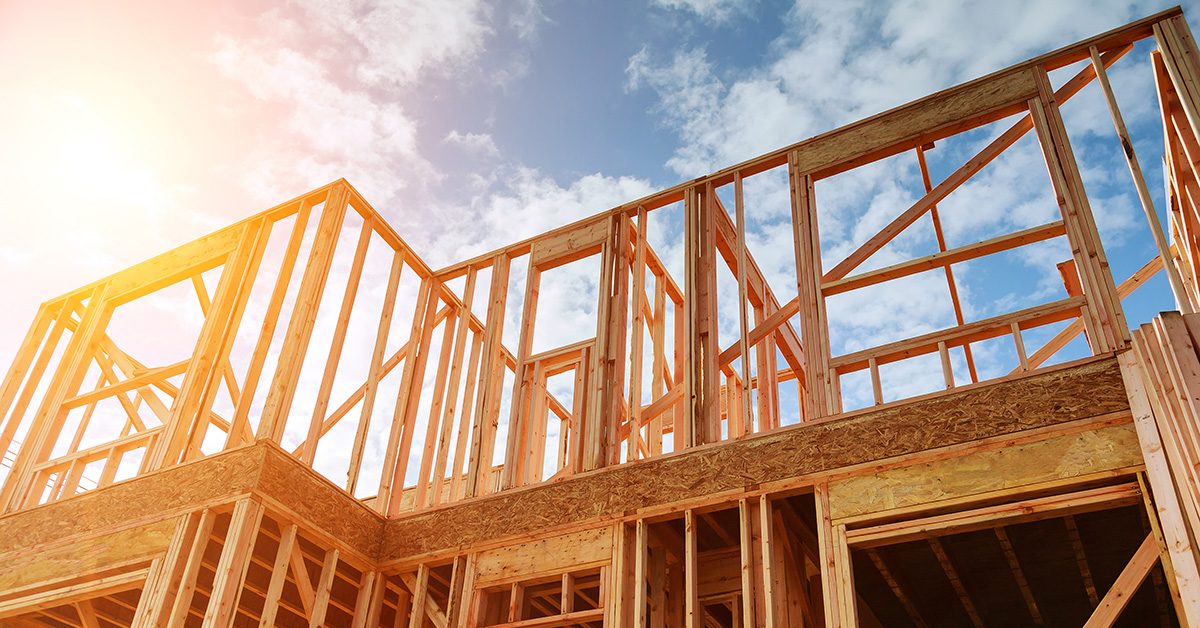





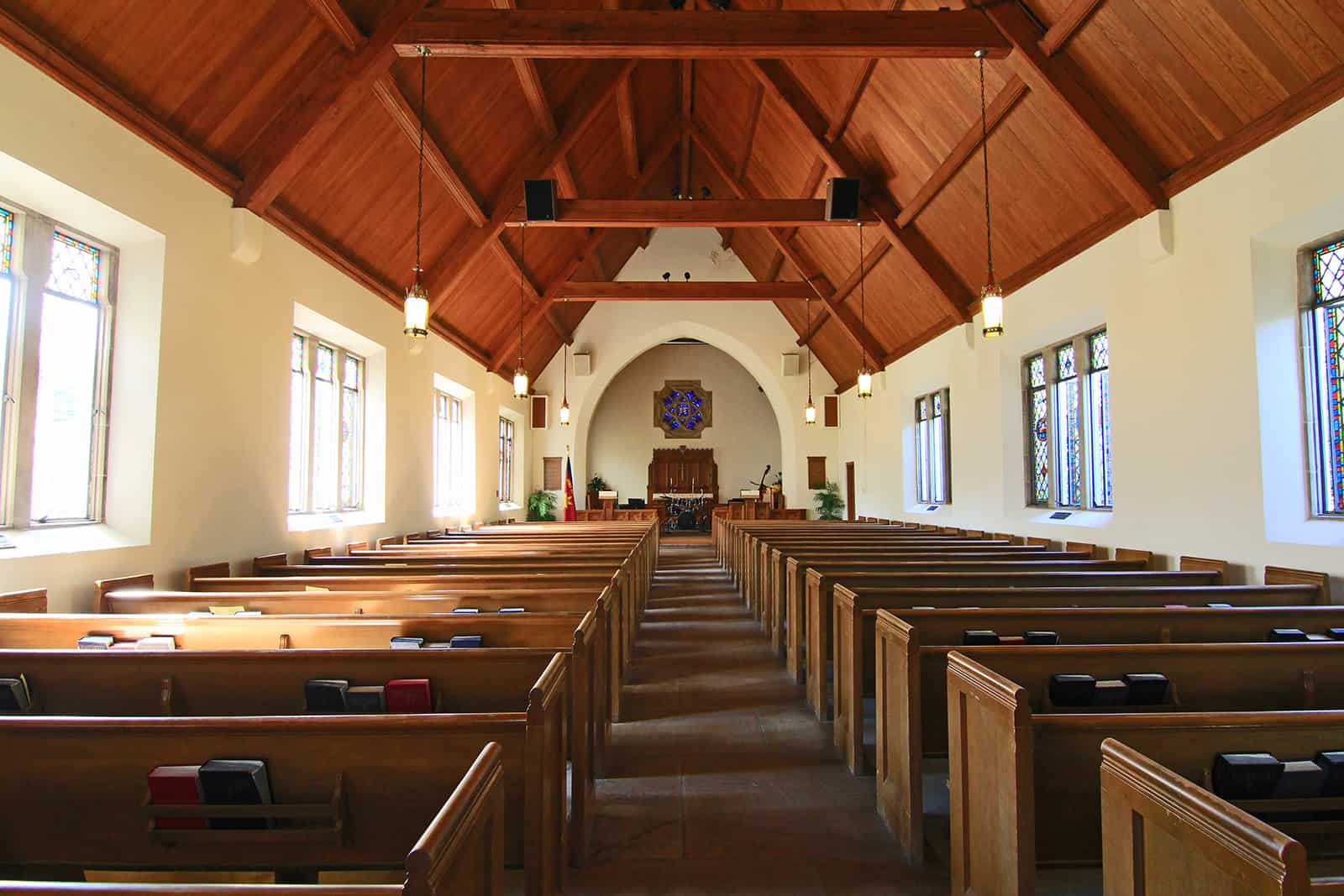

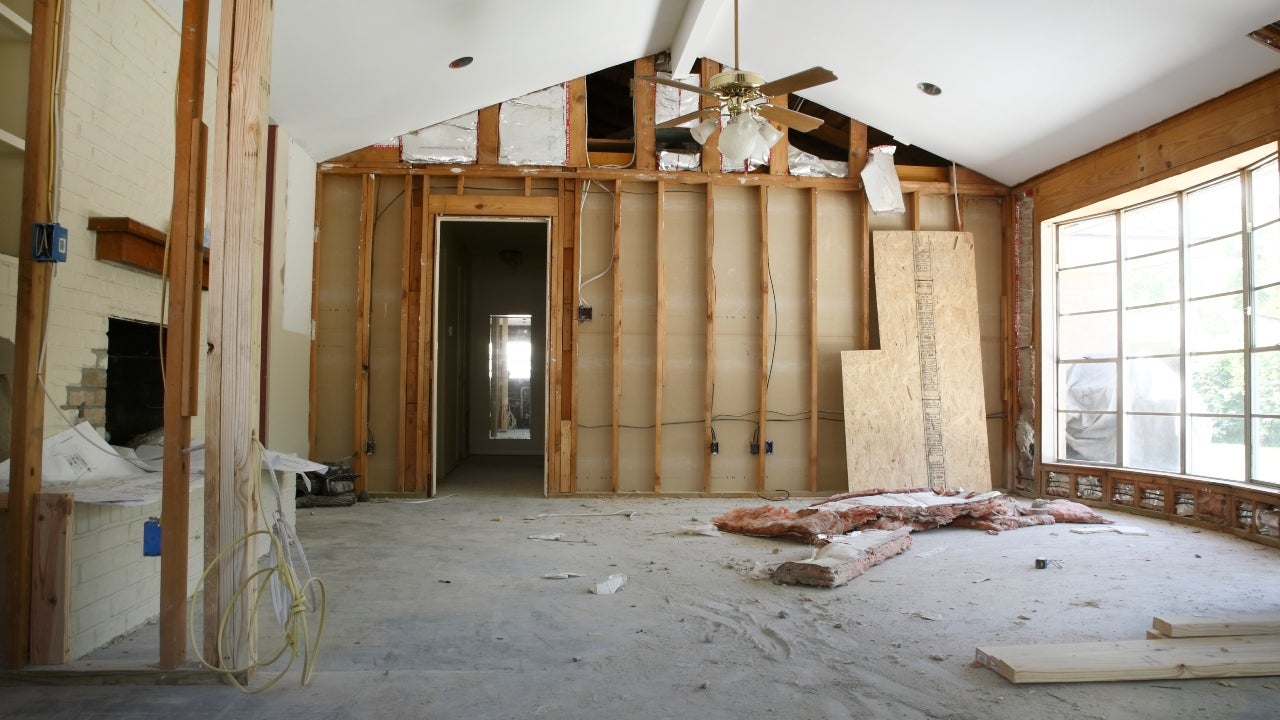

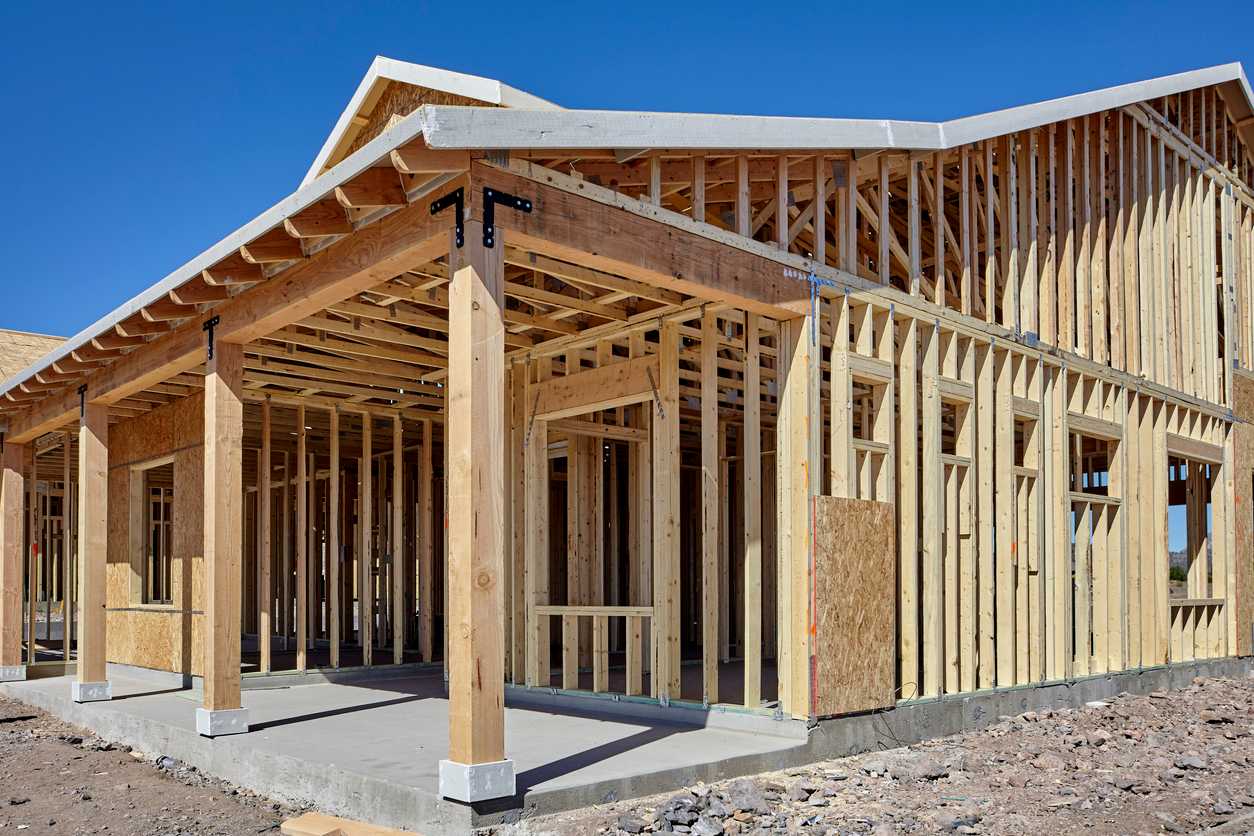



0 thoughts on “How To Get Church Construction Loans”